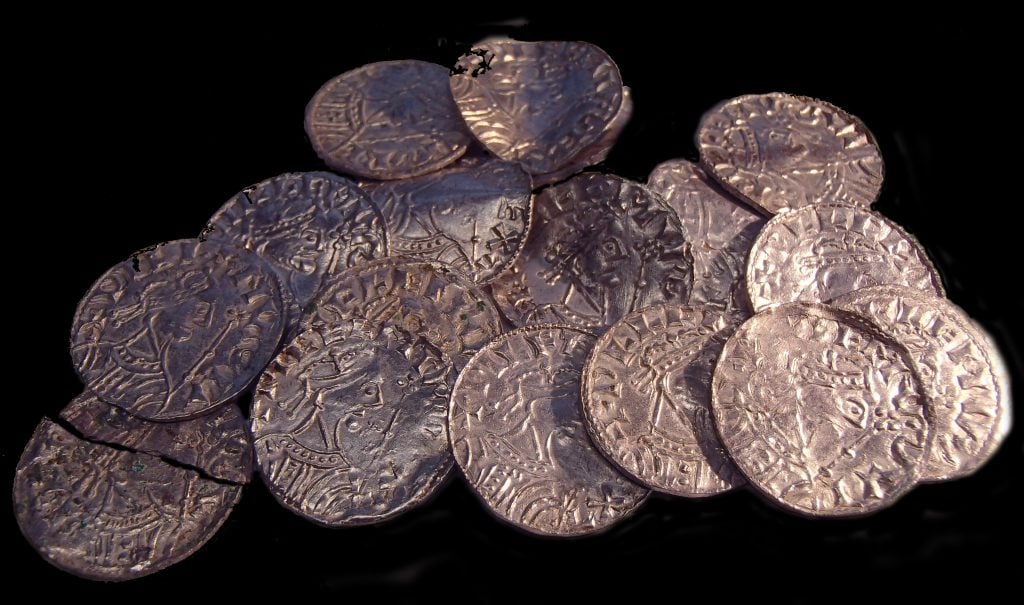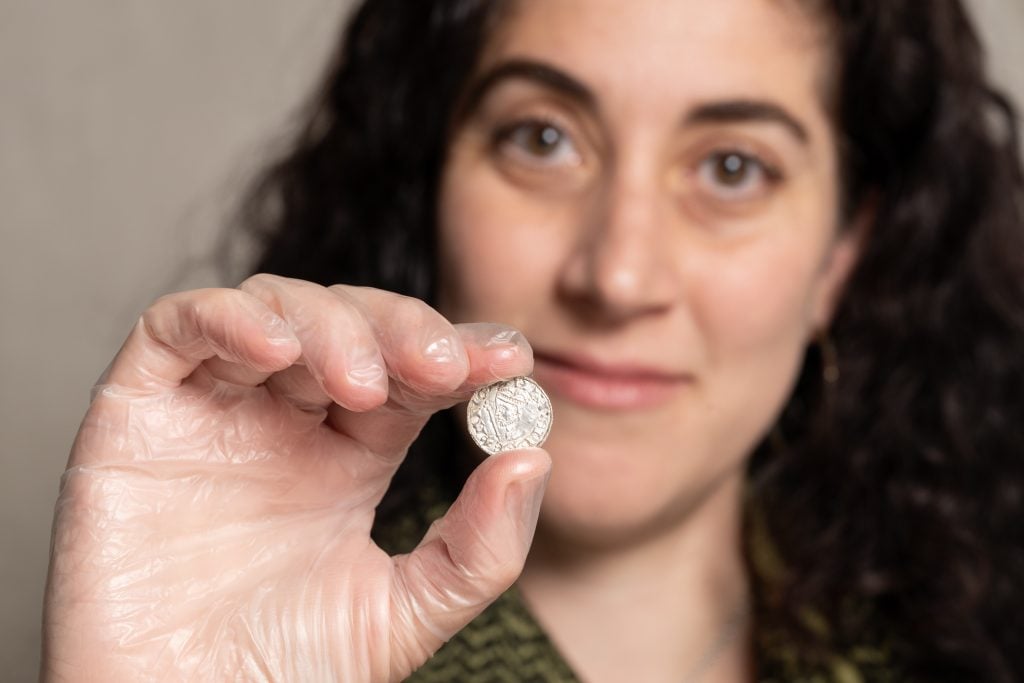Archaeology & History
Ancient Coin Hoard Unearthed by Metal Detectorists Valued at an Epic $5.5 Million
The haul is now the most valuable coin hoard in the U.K.

In January 2019, Adam Staples and his then-partner Lisa Grace traveled to Chew Valley in Somerset, the U.K., to help a friend test their new metal detector. Walking across an unassuming field, it didn’t take long before the device began beeping at what turned out to be an old-looking coin. Although the group couldn’t exactly tell when the coin had been made, their line of work—Staples runs an auction house specializing in ancient coins, while Grace catalogs antiques—allowed them to recognize that they had stumbled upon something special.
They weren’t wrong. Now known as the Chew Valley Hoard, the metal detectorists’ discovery—numbering 2,584 coins—has been valued at £4.3 million ($5.5 million), making it the single most lucrative find in the country’s history.
The trove, assessed by the British Museum under the U.K.’s 1996 Treasure Act, turned out to include silver pennies from c. 1066–68, during the Norman Conquest, when they were likely buried for safekeeping. The face engraved on about half of the old pennies was none other than Harold Godwinson. Harold was the last Saxon King of England, ruling until his death at the Battle of Hastings in 1066, when he was replaced by the person whose face adorns the other half of the coins, William the Conqueror.

Chew Valley Hoard coins featuring engraved portraits of Edward (top), William I (left), and Harold II (right). Photo: British Museum.
According to the Guardian, the Chew Valley Hoard accounts for more than 60 percent of all Harold-faced coins ever found in the U.K. Its share of William-faced coins is higher still, with the total number increasing five-fold following Staples and Grace’s historic discovery.
The coins are thought to have been produced by 100 different moneyers working at 46 mints across England, including Bath, Bristol, Exeter, Hastings, Ipswich, York, and London. The coins featuring Harold probably came from mints in southeast England, and may have been produced in preparation to finance resistance against the Norman invasion.
Some of the coins appear to have been cut in half. Their partial destruction isn’t a result of the passage of time, but a deliberate act on part of the moneyers, as coins from this time were typically broken off into smaller parts to function as smaller denominations. According to Gareth Williams, a curator of early medieval coinage at the British museum, the contemporary value of the hoard would have been about 500 sheep, or the annual income of a large estate.
“It probably didn’t belong to someone from the very top of level of society,” Williams told Current Archeology, a British archaeology magazine, in October 2019, “but this is within the range of a wealthy landowner or merchant.”

South West Heritage Trust curator of archaeology Amal Khreisheh with one of the coins from the Chew Valley Hoard. Photo: ©SWHT.
With the support of National Lottery Heritage Fund and the Art Fund, the South West Heritage Trust has acquired the lot.
“The hoard symbolizes a pivotal moment in English history and we are delighted to have made this acquisition so that it may be
enjoyed by generations to come,” said Sam Astill, chief executive of the trust, in a statement.
The coins from the Chew Valley Hoard are set to go on display at the British Museum in London starting November 26, 2024, after which they will be displayed at museums across the U.K., before settling in their permanent home in the Museum of Somerset.
“The county has a rich heritage and this acquisition will help bring history to life; residents and visitors will be able to engage with the hoard through learning activities and workshops,” said Bill Revans, Somerset Council leader. “As a former history teacher, I am excited by the educational benefits that seeing the hoard in the Museum of Somerset will bring to generations of school children.”





